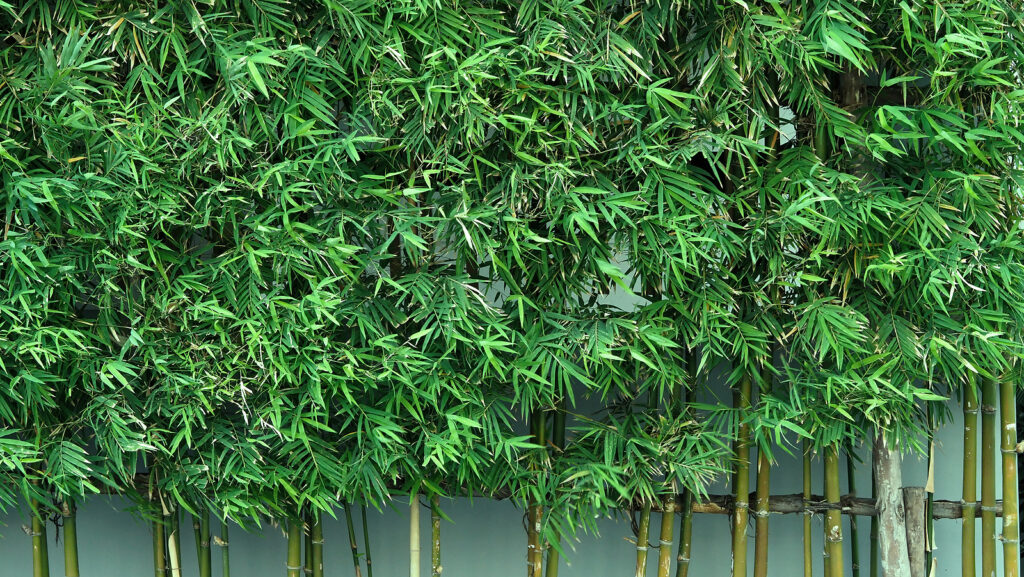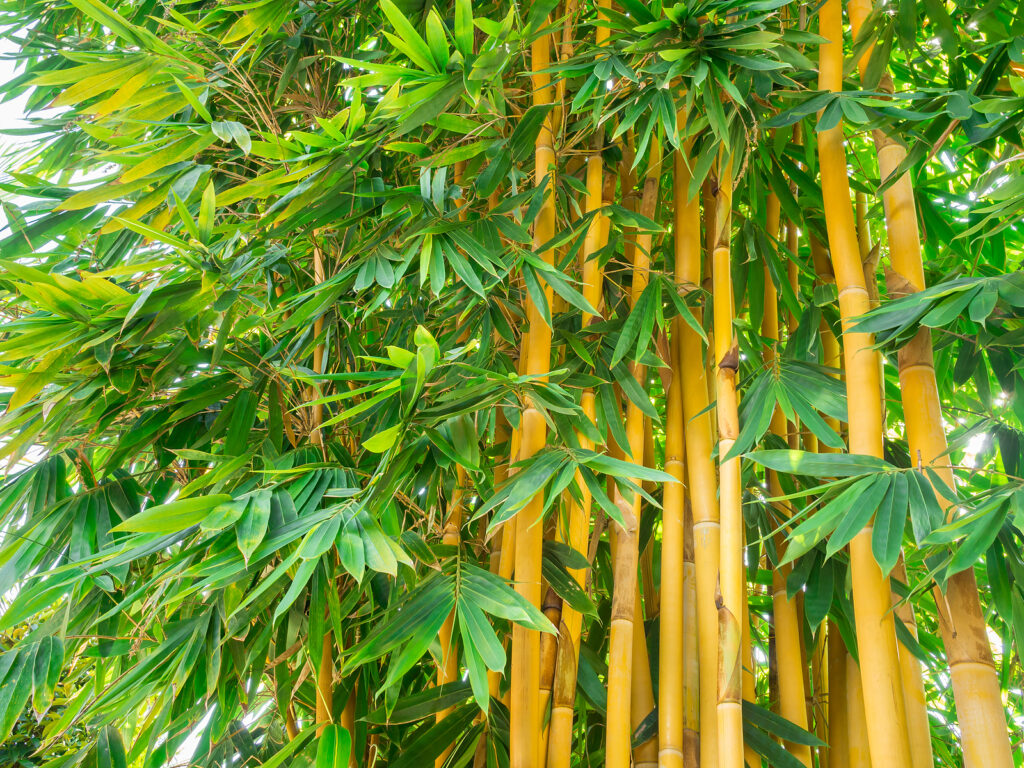Bambusa–commonly called bamboo–is a group of giant grasses with hard, woody stems that vary greatly in size and markings. Bambusa is cultivated for its often dense linear-lance-shaped leaves on slender branches; branches are borne on upright culms (hollow stems) that can grow from 10 to 50 feet (3-15m) tall.
Bambusa grows and expands in a clumping manner through the growth of underground rhizomes. Clumps can become dense stands comprised of many stems. Generally, Bambusa does not expand more than a few inches per year, expanding to about 3 to 10 feet (1-3m)
Bambusa is generally a clumping bamboo as opposed to the genus Phyllostachys which has both clumping and running species. Running bamboos have an aggressive growth and spreading habit needing constant monitoring and control.
Bambusa is a genus of about 120 species of giant grasses that are widely distributed throughout tropical and subtropical regions of the Southern Hemisphere including Asia, Africa, South America, and Australia.
Get to know Bambusa
- Plant type: Clump-forming evergreen giant grass; member of grass family (Poaceae)
- Growing zones and range: Zones 8-12; most are hardy to 20F (-6.7C)
- Hardiness: Half-hardy; best in frost-free regions
- Height and width: 10 to 50 feet (3-15m) or more tall; 3 to 10 feet (1-3m) wide though clumps can expand indefinitely over many years
- Foliage: Linear-lance-shaped leaves on slender branches; branches are born on upright culms (hollow stems)
- Uses: Hedge, screen, windbreak, container plants
- Common name: Bamboo
- Botanical name: Bambusa
- Family name: Poaceae
- Origin: Tropical and subtropical Africa, Asia, and Central and South America

Where to plant Bambusa
- Light outdoors: Bambusa can be grown in full sun or partial shade.
- Soil outdoors: Grow Bambusa in moist, fertile, humus-rich soil in a sheltered site.
- Bambusa can be grown as a hedge or windbreak but wind can dry and yellow leaves.
When to plant Bambusa
- Set container-grown Bambusa outdoors in spring.
Planting and spacing Bambusa
- Space 10 feet (3m) apart or more.
How to water and feed Bambusa
- Water Bambusa moderately and regularly throughout the year.
- Fertilize Bambusa sparingly.
Bambusa care
- Avoid planting Bambusa where there is wind or a constant breeze; wind can suck moisture from the foliage leaving it papery and brown.
Bambusa pests and diseases
- Newly emerging shoots are suscpetible to attack by slugs.
- Fungal leaf spot, rust, and dieback can occur.
Bambusa propagation
- Divide Bambusa clumps in spring.

Bambusa varieties to grow
- Bambusa multiplex, hedge bamboo. Grows 10 to 50 feet tall; slender, arching, yellow or striped culms; up to 20 crowded, paired, linear-lance-shaped, mid green leaves to 6 inches long. Cultivars include: ‘Alphonse Karr’ grows to 25 feet; used as accent plant; has clear yellow stems with green vertical stripes. ‘Fernleaf’ grows to 10 feet; yellow stems; leaves grow in clusters. ‘Golden Goddess’ grows 6 to 10 feet; deep yellow stems and bright foliage.
- B. oldhamii, giant timber bamboo. Vigorous, spreading bamboo with upright, soft green culms (hollow stems) and wide leaves on short branches.
- B. ventricosa, Buddha’s belly bamboo. Grows 15 to 80 feet to 8 feet in containers; strong culms (hollow stems) bear whorls of 10 to 20 linear, lance-shaped dark green leaves.
- B. vulgaris, common bamboo. Grows to 50 feet tall; clump-forming with upright, smooth, soft green culms (hollow stems) and linear-lance-shaped leaves to 8 inches long.
Also of interest:



